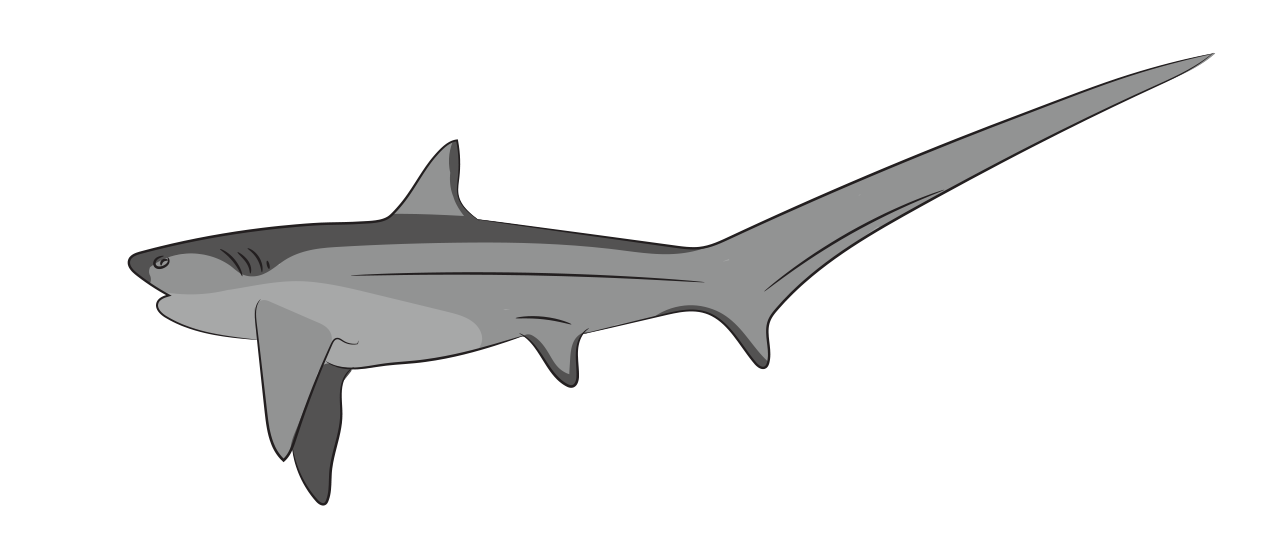This is a demo store. No orders will be fulfilled.
Thresher Shark| Fish Species Guide | Angling Direct

Thresher Shark
aka Alopias vulpinus
Thresher sharks are known for is the long upper tail fin that can be as long as the shark's entire body and they will use this tail to swipe out at small fish. With a preference for tropical, sub-tropical and temperate waters, it is found in the UK and European waters in the summer months and thresher sharks generally stay far offshore, into deeper water. This predatory shark can be identified by its classic torpedo-shaped body that tends to be grey on its back and flanks but can be slightly blue or purple, with a white belly.
Thresher sharks use their long, whip-like tail to lash out at fish, stunning them and making it easier to catch. It will also use its tail to defend itself against humans.
Stats
Status
Habitat
Found in deep waters during the day and at the surface at night.
Bait
Whole bait, strip bait or live bait.
Native or Invasive
Native
Where
Highly migratory, they are found in tropical and temperate waters of the UK and Europe, by coasts and in the open ocean.
 Catch Experience
Catch Experience
Video
Blog Highlight
Guide to Beach Fishing; Seasons & Tides
Fishing the UK waters from beach or boat is very different to coarse and carp fishing, the environment itself provides several challenges. When sea fishing it is important to consider seasons and tides, the time of year and position of the tide will...
Read More